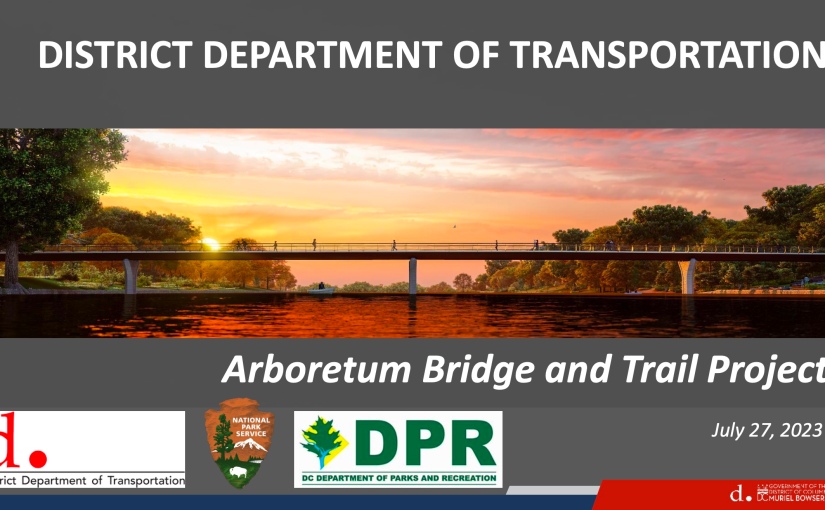The Washington DC Department of Transportation (DDOT) and the National Park Service (NPS) have joined forces to come up with a pedestrian bridge plan that looks great on paper and has the laudable goal of uniting the two sides of DC across a unique natural area in the heart of the nation’s capital. However, all the beautiful artist renderings fail to consider the serious concerns of actual river users.
While I support the idea of improving pedestrian access to the river, the National Arboretum, and Kenilworth Aquatic Gardens, the proposed location is in the last pristine section of the river that has recently seen tremendous growth in fish, birds, and other wildlife. A true comeback story, thanks to thousands of activists who have worked tirelessly for decades toward a swimmable, fishable waterway. Drilling concrete piers into this part of the river would permanently alter the pristine natural beauty in this section of the river that people would come to appreciate.
As a rower on the upper Anacostia, I’ve witnessed the return of bald eagles, beavers, osprey, turtles, and river otters. Once we launch downstream from Bladensburg Waterfront Park, it’s hard to believe this breathtaking natural resource is in the heart of a major city. Our section of the river is so magical that the “other boat club” calls it Narnia. Some in the rowing community would like to see this area designated a wild and scenic river — granting the environmental protections that the Anacostia deserves.
Another concern is that the Anacostia River is only 10 miles long, yet it already has 11 bridges! Why can’t DDOT and NPS use a pre-existing bridge to open up the river to pedestrians? The New York Avenue Bridge is only half a mile from the National Arboretum. Why not add a pedestrian and bicycle walkway there?
The proposed bridge would place three concrete piers into the middle of the river, creating siltation that will likely degrade the quality of the water and become a safety hazard for the hundreds of rowers who use the river daily. The artist’s drawings depict an imaginary river at high tide after heavy rains, when water completely covers the mud banks. A single-span bridge design would be a better option.
Currently, the Arboretum has restricted access from 8:30 to 4:30. There is no bicycle path currently planned for the west side of the river and it is my understanding that the pedestrian bridge is not even mentioned in the Arboretum’s 10-year plan. A project that requires such a huge financial commitment and years of effort across multiple agencies should not have piecemeal development.
When the Anacostia Riverwalk Trail (ART) opened in 2016, cyclists began appearing up and down the east side of the river. While it’s great for bikers, the ART has not opened access to the river for residents interested in boating, swimming, fishing, or wading. There are few places for those on foot to stop and linger on the riverbank. Will the Arboretum bridge be another slab of asphalt that keeps potential river users at a distance?
DDOT and NPS should work harder to come up with a better plan. This is a bridge too far.

Well said, Eva. Thank you.
LikeLike
Marian, you’re my guru on all things Anacostia River! Your advocacy is inspiring!
LikeLike
Thank you. I wonder why this bridge is so important? Neither the Arboretum or Aquatic Gardens have community friendly hours, so this isn’t a useful bridge. As a river user, I agree that the river does not benefit from another bridge. As a cyclist, I would find a NY ave bridge useful. I also agree that building a costly bridge before building the trail infrastructure on the bank almost guarantees this bridge will be like the South Dakota NE bike path, that is a neglected, unconnected, orphaned bit of bicycle infrastructure. On the plus side for South Dakota NE, it did not involve a huge environmental cost lile this bridge will.
LikeLike
Kent – Thanks! It’s not too late to get involved! The Anacostia Riverwalk Trail Expansion through Kenilworth Park is on the agenda for the meeting of the National Capital Planning Commission Thursday Oct 5 at 1pm. The hearing will be live streamed. https://www.ncpc.gov/review/meeting/
Hope you can attend and share your perspective as a cyclist!
~ Eva
LikeLike